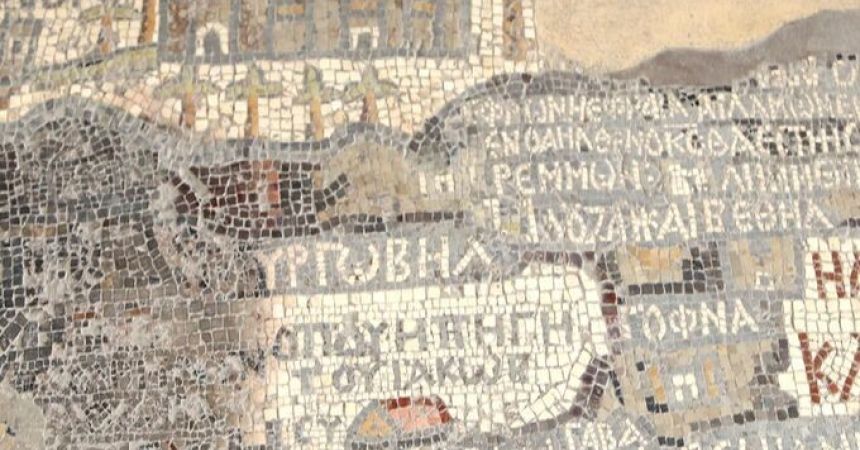
Jerash, Jordan: Ancient Roman Ruins, History & Visitor Guide
Nestled in the northern hills of Jordan, Jerash is a remarkable testament to the grandeur of ancient civilizations. Known for its remarkably well-preserved ruins and its status as one of the best-preserved Roman cities outside of Italy, Jerash offers a captivating glimpse into the past. This ancient city, often referred to as Gerasa in classical antiquity, provides a blend of history, architecture, and culture that is both enchanting and educational. In this blog, we’ll embark on an extensive journey through the ancient marvels of Jerash, exploring its historical significance, architectural wonders, and practical tips for visitors.
A Brief History of Jerash
The Origins and Historical Background
Jerash's origins trace back to the Neolithic period, but it truly began to flourish during the Hellenistic period when it was part of the Seleucid Empire. The city came under Roman control in the 1st century BC and was incorporated into the Decapolis, a group of ten cities that were centers of Greek and Roman culture. During the Roman period, Jerash experienced a golden age, marked by significant urban development and monumental construction.
The city's prosperity continued through the Byzantine period, but it faced decline and abandonment with the advent of the Islamic period and subsequent earthquakes. It was largely forgotten until its rediscovery in the early 19th century, and archaeological excavations began in earnest in the 1920s, revealing the city's impressive ruins.
Key Attractions and Marvels of Jerash
-
The Hadrian’s Arch
Overview
The Hadrian’s Arch, also known as the Arch of Hadrian, is the grand entrance to the ancient city of Jerash. Erected in 129 AD to honor the visit of Emperor Hadrian, the arch is a striking example of Roman triumphal architecture.
Architectural Features
The arch stands at 11 meters (36 feet) high and 15 meters (50 feet) wide. It is adorned with intricate carvings and inscriptions that commemorate the emperor’s visit and the city's importance. The arch’s three arches and decorative reliefs reflect the grandeur of Roman engineering and artistic skill.
Visiting Tips
Take time to admire the arch from different angles to appreciate its scale and detail. Photography is a great way to capture the grandeur of this iconic structure.
-
The Roman Theater
Overview
The Roman Theater of Jerash is one of the best-preserved ancient theaters in the world. Built in the 2nd century AD, it showcases the architectural ingenuity of the Romans in designing large-scale public entertainment venues.
Architectural Features
The theater is semi-circular with a capacity of about 3,000 spectators. It features a well-preserved stage with marble seats, an orchestra pit, and an impressive acoustical design. The theater’s structure includes 40 rows of seats and a grand stage with intricate columns and carvings.
Visiting Tips
Try to catch a performance or a reenactment if available, as it provides a unique way to experience the theater as it was used in ancient times. The acoustics are excellent, so even if no events are scheduled, the theater is worth a visit.
-
The Temple of Artemis
Overview
The Temple of Artemis, dedicated to the goddess Artemis, is one of the most prominent structures in Jerash. Constructed in the 2nd century AD, the temple reflects the city's devotion to Roman deities and its architectural prowess.
Architectural Features
The temple is characterized by its grandiose columns, some of which still stand tall, offering a glimpse into its former glory. The temple was originally surrounded by a colonnaded courtyard and included a large inner sanctum.
Visiting Tips
Explore Jerash temple’s surroundings and imagine the grandeur of the original structure. The site offers fantastic opportunities for photography, particularly the columns against the backdrop of the sky.
-
The Oval Plaza
Overview
The Oval Plaza is a unique and impressive feature of Jerash’s urban planning. It is a large, elliptical forum that served as a central gathering place and marketplace.
Architectural Features
The plaza is surrounded by a colonnade of 56 columns, creating a grand open space. Its elliptical shape is a rarity in Roman urban design and reflects the influence of Greek architecture. The plaza’s marble pavement and the surrounding columns add to its aesthetic appeal.
Visiting Tips
Walk around the plaza and imagine the bustling activity that once took place here. The open space is ideal for panoramic photographs and appreciating the layout of ancient Jerash.
-
The Cardo Maximus
Overview
The Cardo Maximus was the main north-south thoroughfare of Jerash, connecting the city with other important locations in the Roman Empire. It remains one of the most prominent streets in Jerash, showcasing Roman urban planning.
Architectural Features
The street is lined with columns and features a central drainage channel. The Cardo Maximus is flanked by several important buildings, including shops and administrative structures. Its paving stones and column remains highlight the grandeur of Roman infrastructure.
Visiting Tips
Walk along the Cardo Maximus to experience the scale of Roman urban planning. Pay attention to the remnants of shops and public buildings along the street.
-
The Nymphaeum
Overview
The Nymphaeum of Jerash is a monumental fountain dedicated to the nymphs, deities associated with springs and natural features. Constructed in the 2nd century AD, it was an important public water source.
Architectural Features
The Nymphaeum features a grand façade with a series of niches and decorative columns. The structure was originally adorned with statues and elaborate carvings, though many have been lost over time.
Visiting Tips
Admire the remaining features of the Nymphaeum and imagine the lavish water displays that once occurred here. The site provides excellent photo opportunities, particularly of the ornate columns and niches.
-
The South Theater
Overview
The South Theater is another well-preserved ancient theater in Jerash. Smaller than the Roman Theater, it offers insights into the city’s entertainment culture.
Architectural Features
The South Theater has a semi-circular design and is capable of seating around 500 spectators. It features a stage and seating arrangements similar to the larger Roman Theater but on a smaller scale.
Visiting Tips
Explore the South Theater to see a different perspective of Jerash’s theatrical architecture. It’s a quieter site compared to the Roman Theater and offers a more intimate experience.

Practical Tips for Visiting Jerash
Getting There
Jerash is located approximately 48 kilometers (30 miles) north of Amman, Jordan’s capital. The drive from Amman to Jerash typically takes around one hour.
Transportation Options
- Private Car: Renting a car is a convenient way to travel to Jerash. The roads are well-maintained, and the drive offers scenic views of the Jordanian countryside.
- Taxi: Taxis are readily available in Amman and can be hired for a day trip to Jerash.
- Tour Groups: Many travel agencies offer guided tours to Jerash, which can provide additional insights and convenience.
Entrance Fees and Hours
Entrance Fees
As of 2024, the entrance fee for Jerash is approximately 10 JOD (Jordanian Dinar) for adults. There may be additional fees for guided tours or special activities.
Opening Hours
Jerash is open daily from 8:00 AM to 6:00 PM. However, hours may vary slightly depending on the season and special events, so it’s advisable to check in advance.
Benefits of a Guided Tour
A guided tour to Jerash can enhance your visit by providing historical context, interesting anecdotes, and detailed explanations of the site’s features. Guides are often knowledgeable about the site’s history and can offer a deeper understanding of the ancient marvels.
Booking a Tour
Tours can be booked through local travel agencies or online platforms. It’s a good idea to read reviews and select a reputable guide to ensure a quality experience.
What to Bring
Essentials
Comfortable Footwear: Jerash covers a large area with uneven terrain, so comfortable walking shoes are essential.
Water Bottle: Stay hydrated while exploring the site, especially during the warmer months.
Hat and Sunscreen: Protect yourself from the sun, as much of the site is exposed to the elements.
Camera: Jerash offers numerous photo opportunities, so don’t forget your camera to capture the ancient marvels.
Health and Safety
Jerash is a safe destination for tourists. However, it’s always wise to stay aware of your surroundings and follow any safety instructions provided by local authorities or guides.
Health Precautions
Stay Hydrated: The climate can be dry, so drink plenty of water throughout your visit.
Sun Protection: Use sunscreen and wear a hat to protect yourself from the sun.
Local Etiquette
Respecting the Site
Jerash is an archaeological site with significant historical value. Be respectful of the ruins and follow any guidelines provided by site authorities. Avoid touching or climbing on ancient structures, and adhere to any posted rules.
Interactions with Locals
Jordanian people are known for their hospitality. Engage with local vendors and guides respectfully, and take the opportunity to learn more about the culture and history from those who know it best.
Nearby Attractions in Jerash
-
Ajloun Castle
Overview
Ajloun Castle, located about 20 kilometers (12 miles) from Jerash, is a well-preserved medieval fortress built during the Ayyubid period. The castle offers panoramic views of the surrounding countryside and is a significant historical site.
Visiting Tips
- Explore the castle’s towers and ramparts for stunning views.
- Learn about the castle’s history as a defensive structure during the Crusades.
-
Umm Qais
Overview
Umm Qais, also known as Gadara, is an ancient city located approximately 40 kilometers (25 miles) from Jerash. The site features ruins from the Roman, Byzantine, and Ottoman periods, including a theater, baths, and a colonnaded street.
Visiting Tips
- Visit the site to explore the ancient ruins and enjoy views of the Sea of Galilee and the Golan Heights.
- Combine your visit with a trip to Jerash for a comprehensive exploration of ancient Jordanian history.
-
Amman
Overview
Amman, Jordan’s capital, is located about 50 kilometers (31 miles) from Jerash. The city offers a rich mix of ancient and modern attractions, including the Roman Theater, the Citadel, and the Jordan Museum.
Visiting Tips
- Spend a day in Amman to experience Jordan’s vibrant capital.
- Explore the city’s markets, restaurants, and cultural landmarks.
Jordan Travel: Experience Rich Culture and History
Jerash stands as a timeless testament to the grandeur of ancient civilizations, offering visitors a unique and immersive experience. From the imposing Hadrian’s Arch to the majestic Temple of Artemis, each monument tells a story of a city that once thrived under Roman rule. As you explore the ancient streets, theaters, and plazas of Jerash, you’re not just witnessing ruins but engaging with the rich tapestry of history that has shaped this remarkable site.



